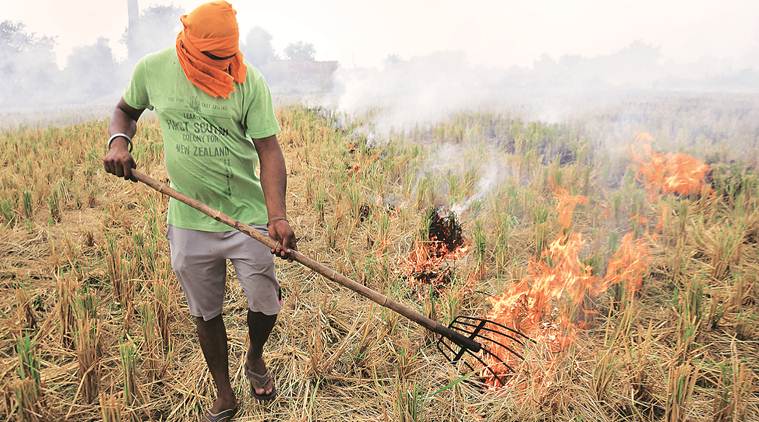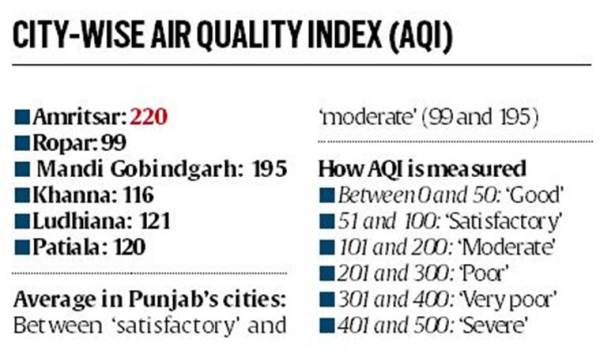The state pollution control board recorded 959 instances of stubble burning (since September 23) till Monday evening. The figure is much higher as compared to last year till October 14 (674).
WHILE DELHI Chief Minister Arvind Kejriwal has blamed crop residue burning in Punjab and Haryana for the national capital’s poor air quality, Punjab Agriculture Secretary Kahan Singh Pannu said the state had no role in the matter, adding that its Air Quality Index (AQI) is much better than Delhi’s.
The state pollution control board recorded 959 instances of stubble burning (since September 23) till Monday evening. The figure is much higher as compared to last year till October 14 (674). Till 8 pm Sunday, 630 incidents of stubble fires were reported from across the state, a 45 per cent increase from last year.
Central Pollution Control Board (CPCB) records show that while Delhi’s AQI was ‘poor’ at 250, the AQI in Punjab’s cities was between ‘satisfactory’ and ‘moderate’ (between 99 to 195). Amritsar recorded the highest AQI in Punjab at 220, while other cities remained under 121. Amritsar recorded the maxium fire incidents (357 out of total 959) till Monday evening.
Pannu said, “Punjab has no role in Delhi’s pollution. The smoke from whatever fires reported cannot go to Delhi as we are experiencing easterly winds. Delhi cannot blame us. If at all we have any smoke, then the easterly winds will carry it to Pakistan. Also, our AQI is much better than Delhi. Smoke will gather here first before going to Delhi.”
He further said, “We are keeping a close tab. It is not that we will not suffer if we create pollution. We will be the victims. Hence, we are working hard to discourage the farmers. Right from the patwaris to the top, we have people in the field to appeal to the farmers.”
Worst is yet to come: Farmers
The Majha region has reported the highest number of fires this year. In Malwa, harvesting is yet to pick up as farmers in this region cultivate the PUSA 44 variety, which matures later. Farmers say the worst is yet to come when their Malwa counterparts harvest their crop, and they will be left with a shorter window to prepare their fields for the next crop.
Source: Read Full Article



